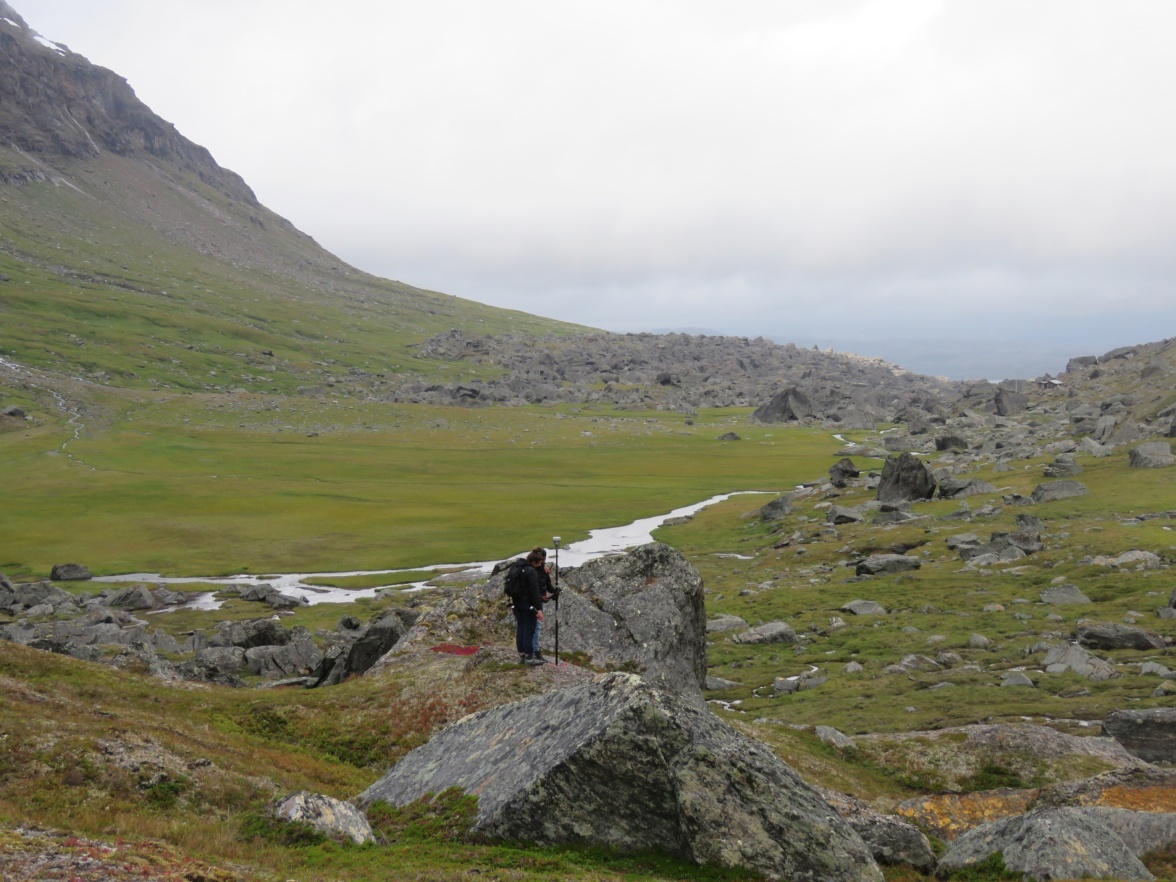
RTK measurements performed by researchers from Luleå University of Technology in Kärkevagge, Swedish Lapland. Picture: credits GAS.
Last summer, four researchers from Luleå University of Technology visited Kärkevagge. Kärkevagge is a valley about five miles west of Abisko with very special glacier-like landforms (GLFs). The research team found that it was sometimes impossible to distinguish GLFs in Kärkevagge from those found on Mars. In preparation for the upcoming Mars project, one needs to understand how different landforms have arisen. The project carried out precise geomorphological and thermal surveys in the area using the GNSS RTK (Global Navigation Satellite System - the European GPS system - and Real Time Kinematics). RTK is an accurate form of position measurement where fixed base stations and a drone with GPS receivers are used simultaneously. In this way, an extremely accurate survey of GLFs and other periglacial land formations was obtained.
As a further preparation for future Mars projects, the group has applied to participate in upcoming expeditions to Wasa, the Swedish station on the Antarctic, to test the mapping system and other instruments in extreme environments.